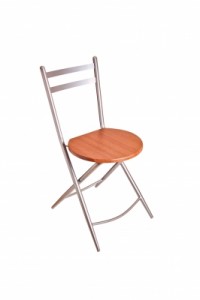by Allison Hall, MD
(Note: this post was primarily written by my colleague, child psychiatrist Dr. Allison Hall who, aside from seeing children and families directly, trains other counselors and therapists in parent behavioral training techniques. If you are interested further in the topic, she will be presenting at next month’s Child Psychiatry in Primary Care conference.)
Parents will often announce that time-outs don’t work with children who have challenging behavior. This may be true in some cases; however, very often there are problems with how time-outs are being used. The origin of the term “time out” comes from “time out from reinforcement”. Reinforcement just means things that make behavior more likely to occur in the future. One of the most important of these for children is parental attention.
being used. The origin of the term “time out” comes from “time out from reinforcement”. Reinforcement just means things that make behavior more likely to occur in the future. One of the most important of these for children is parental attention.
From our experience and those of others, the following are five of the most common mistakes that are made when parents try to use time-outs. If a parent expresses during a primary care appointment a lack of success for time-outs, it can be very useful to review this list.
- Forgetting the part about paying lots of positive attention to your child. First and foremost, if time-out (or any discipline technique) is going to work, it is vital that parents offer plenty of attention to the child when he or she is being cooperative and having fun. Positive attention can include noticing and commenting on things your child is doing, a smile, a wink, a pat on the back, and just spending happy time together. The phrase “catch your child being good” has become cliché, but it’s still important.
- Not planning ahead. What behaviors should earn a time-out? Where should a time-out occur? For how long? These questions should be thought through before a time-out is used. Many parents reserve time-outs for hitting. Whatever parents have decided, however, it is important to be very consistent. Pick a place ahead of time away from toys, the television, and other distractions while not choosing an isolated, dark, or scary place. A chair in the hallway is a good choice. As for length, here the main thing is not too long. What makes a consequence work is not how severe it is but how consistent it is – swift and certain. Talk to children about the time out process first. Even better, practice with them, giving them a chance to pretend to be naughty.
- Losing one’s own temper during a time-out. Parents should work hard not to lecture, shame, yell, or physically fight to get the child in time out. All of those things are forms of attention which may accidentally reinforce the negative behavior. They can also have negative consequences of their own. Instead, just say “Because you hit your brother, you must go to time out” and point to the chair.
- Not having a back-up plan if the child leaves time-out early. While some people advocate taking the child back into the time-out chair over and over again if they get out, this may not always be the best approach. Alternatively, another trick is to have a back-up consequence – like losing a half hour of electronics. That way, if the child refuses to take the time-out, he loses that privilege.
- Staying mad. Once time out is over, be positive with your child again. This can definitely be easier said than done, especially if the parent has been hit or called really nasty names, but one of the beauties of time-out is that it happens and then it is over. Work to find something pleasant to say. If a parents needs to talk about some aspect of what happened, it’s best to try this a little later when the child is not upset or defensive.
Time-outs sound easy but can be challenging, so parents shouldn’t be afraid to ask for some help. Having a coach to help practice and problem solve can be really helpful. There are also some excellent videos available at this CDC website.
Tags: discipline, parenting, time-out


